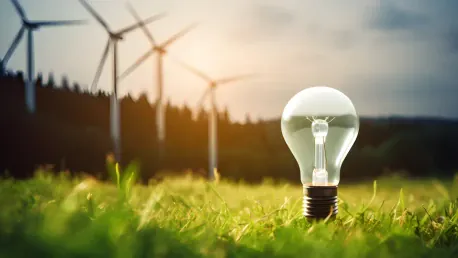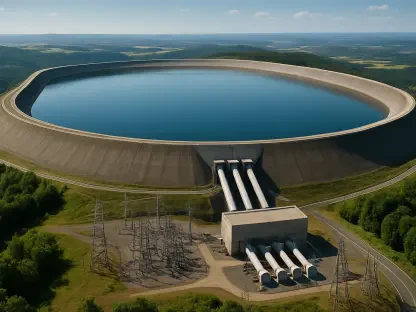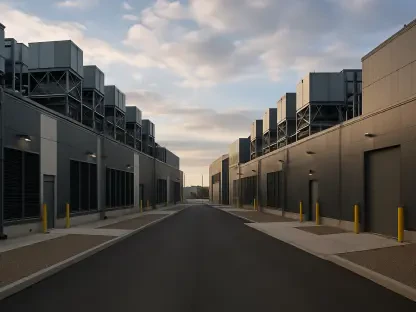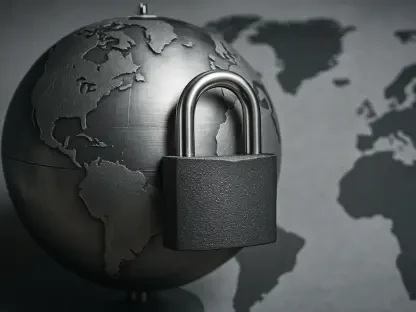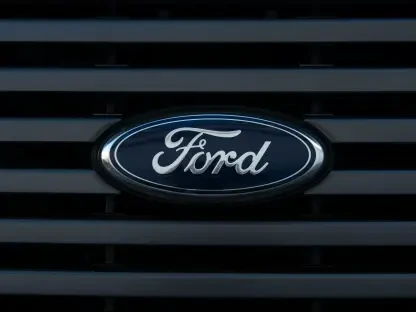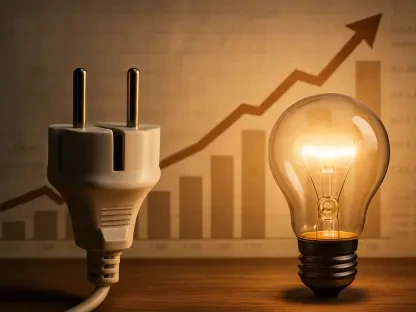The transition to clean energy is not only an environmental imperative, but it also presents a significant economic opportunity for communities. As more residential areas increasingly recognize the economic and environmental benefits of clean energy adoption, various programs and initiatives are being implemented to make these technologies more accessible and affordable. This article explores the common themes, key points, and overarching trends in clean energy affordability, highlighting the efforts made by various agencies and organizations to maximize these benefits for both residential and commercial consumers.
Economic and Environmental Benefits
Advancing Clean Energy Technologies
Advancing clean energy technologies provides significant economic and environmental benefits. By reducing energy costs, clean energy can foster economic development and attract manufacturers and large-scale industries. This influx can lead to enhanced employment opportunities, creating a positive feedback loop that benefits the entire community. Clean energy technologies, such as solar panels, wind turbines, and electric vehicles, are transforming the way we consume and produce energy, offering more sustainable alternatives to fossil fuels. The economic advantages include not only cost savings for consumers but also the stimulation of new industries and job creation in the renewable energy sector.
Moreover, the environmental benefits of clean energy are substantial. Reducing greenhouse gas emissions through the adoption of renewable energy sources helps mitigate climate change and decreases air pollution, resulting in healthier living environments. By transitioning to clean energy, communities can further their commitment to environmental stewardship and sustainability. This shift also supports the resilience of energy systems, reducing reliance on imported fuels and enhancing energy security. The collective impact of these advancements underscores the importance of continued investment and innovation in clean energy technologies.
Reducing Energy Burdens
Implementing energy efficiency and weatherization efforts is crucial for reducing energy burdens, especially in residential areas. Older homes, particularly those built in the 1960s, often face higher energy costs due to outdated construction practices. By upgrading these homes, residents can enjoy lower energy bills and a more comfortable living environment. Energy efficiency measures, such as insulating walls and roofs, installing energy-efficient windows, and upgrading heating and cooling systems, can significantly reduce the amount of energy needed to maintain comfortable indoor temperatures.
Weatherization efforts also play a vital role in mitigating energy poverty, which disproportionately affects low-income households. When energy bills consume a large portion of a household’s income, it can lead to difficult trade-offs between paying for energy and other essential services like food, healthcare, and transportation. By making homes more energy-efficient, weatherization programs help to alleviate these financial pressures. Additionally, these improvements contribute to the overall health and well-being of residents by providing safer and more stable living conditions. The dual benefits of energy efficiency and weatherization underscore their importance in the pursuit of affordable and sustainable clean energy solutions.
Programs and Incentives
Federal and State Programs
Various federal and state programs offer tax incentives and financial assistance to make clean energy more affordable and accessible. Programs such as the Weatherization Assistance Program, Low Income Energy Assistance Program (LIEAP), and multiple Energy Efficient Mortgages (EEMs) provide crucial support to homeowners looking to improve their energy efficiency. These programs are designed to lower the financial barriers to clean energy adoption by offering rebates, grants, and low-interest loans for energy-efficient upgrades.
The Weatherization Assistance Program, for instance, aims to reduce energy costs for low-income households by improving the energy efficiency of their homes. This program offers services like energy audits, insulation installation, and heating system repairs, all of which help to lower energy usage and costs. Similarly, the Low Income Energy Assistance Program (LIEAP) provides one-time payments to help eligible households cover heating bills during the winter months, ensuring that residents can stay warm without facing financial hardship. Energy Efficient Mortgages (EEMs) offer homeowners the ability to finance energy-saving improvements as part of their home purchase or refinancing process, making it easier to invest in clean energy solutions.
Specific Program Impacts
The North Carolina Department of Environmental Quality (NCDEQ) administers the Weatherization Assistance Program, which provides free energy efficiency upgrades to eligible residents. This program significantly lowers energy costs for participating households while improving the comfort and safety of their homes. Additionally, the Low Income Energy Assistance Program (LIEAP) offers one-time payments to help eligible households cover heating bills, providing immediate financial relief during colder months.
Energy Efficient Mortgages (EEMs) support refinancing or improving homes to enhance energy efficiency, making it easier for homeowners to invest in clean energy solutions. By integrating the cost of energy-efficient upgrades into the mortgage, homeowners can benefit from reduced monthly energy bills while spreading the cost over the life of the loan. This financial mechanism not only facilitates the adoption of clean energy technologies but also enhances the overall value and sustainability of residential properties.
Federal tax credits and rebates from entities like Duke Energy further reduce the financial burden of implementing energy-efficient upgrades. These incentives encourage homeowners to adopt renewable energy solutions, such as solar panels and energy-efficient appliances, by offsetting a portion of the upfront costs. Collectively, these programs and incentives play a pivotal role in expanding the accessibility and affordability of clean energy for residential consumers, promoting a more sustainable and resilient energy infrastructure.
Educational and Workforce Development Initiatives
Community Education
Organizations like the Center for Energy Education (C4EE) focus on educating communities about renewable energy technologies and the potential for economic growth. By raising awareness and providing information, these organizations help communities understand the benefits of clean energy and how to access available resources. Community education programs often include workshops, seminars, and outreach events designed to inform residents about the advantages of renewable energy and the steps they can take to incorporate these technologies into their homes.
Through educational initiatives, organizations aim to demystify clean energy technologies and dispel common misconceptions. By highlighting the practicality, cost-effectiveness, and environmental benefits of renewable energy, these programs empower individuals and communities to make informed decisions about their energy consumption. Furthermore, educational efforts often emphasize the importance of energy conservation practices, encouraging residents to adopt behaviors that reduce energy usage and enhance the overall efficiency of their homes.
Workforce Training
C4EE emphasizes the need for training in new technologies to ensure that communities fully benefit from clean energy sources. By offering training programs and workshops, they equip individuals with the skills needed to work in the clean energy sector, thereby creating job opportunities and supporting local economies. Workforce training initiatives are designed to develop a skilled labor force capable of installing, maintaining, and operating clean energy systems, such as solar panels and wind turbines.
These training programs often collaborate with local educational institutions, industry partners, and government agencies to provide comprehensive curricula that cover the latest advancements in renewable energy technologies. By focusing on hands-on learning and practical applications, these programs prepare participants for careers in the growing clean energy industry. Additionally, workforce training initiatives can help address workforce shortages in the renewable energy sector, ensuring that the demand for clean energy jobs is met with a supply of qualified professionals.
By fostering a knowledgeable and skilled workforce, these initiatives contribute to the broader goal of sustainable development and economic resilience. As more individuals gain expertise in clean energy technologies, communities can better support the transition to renewable energy, creating a virtuous cycle of economic growth, environmental stewardship, and enhanced energy independence.
Challenges in Implementation
Rural Area Barriers
In rural areas, ordinances can complicate or block clean energy solutions like rooftop solar. These regulatory hurdles can make it difficult for residents to adopt clean energy technologies, highlighting the need for targeted policy changes and support. Restrictions on land use, zoning regulations, and permitting processes can create significant obstacles to the deployment of renewable energy projects in rural communities. Addressing these barriers requires collaboration between local governments, policymakers, and advocacy groups to develop strategies that facilitate the adoption of clean energy solutions.
In addition to regulatory challenges, rural areas often face logistical and financial constraints that hinder clean energy implementation. The costs associated with installing and maintaining renewable energy systems can be prohibitive for rural residents, particularly those in low-income communities. Furthermore, the lack of infrastructure and technical expertise in these areas can pose additional challenges to the successful deployment of clean energy projects. Efforts to overcome these barriers must include targeted financial assistance, technical support, and streamlined regulatory processes to ensure that rural communities can benefit from clean energy technologies.
Addressing High Energy Burdens
High energy burdens, particularly in low-income regions, underscore the need for targeted weatherization programs. By focusing on these areas, programs can provide substantial relief and improve the quality of life for residents who are most in need. Energy burdens refer to the percentage of household income spent on energy bills, and for low-income families, this can be disproportionately high. Reducing energy burdens through weatherization and energy efficiency measures is essential for alleviating financial stress and promoting economic stability.
Targeted weatherization programs aim to improve the energy efficiency of homes by addressing issues such as inadequate insulation, leaky windows, and inefficient heating and cooling systems. These interventions can significantly reduce energy consumption and lower utility bills, providing immediate financial relief for residents. Additionally, weatherization efforts contribute to the long-term sustainability of homes by enhancing their overall performance and durability. By prioritizing low-income households and communities with high energy burdens, these programs ensure that the benefits of clean energy are equitably distributed.
Collaborative efforts between government agencies, nonprofit organizations, and community groups are essential for the successful implementation of targeted weatherization programs. By pooling resources and expertise, these stakeholders can develop comprehensive strategies that address the unique needs and challenges faced by low-income communities. Through concerted action and inclusive policies, it is possible to achieve meaningful reductions in energy burdens and promote a more equitable transition to clean energy.
Future Forward Approaches
Government and Nonprofit Initiatives
Both government agencies and nonprofit organizations actively promote clean energy through various incentives and educational programs. This broader consensus on the importance of clean energy efforts for community development and sustainability reflects a unified direction toward achieving widespread clean energy adoption. Government initiatives often include funding for research and development, policy incentives, and public awareness campaigns to encourage the use of renewable energy sources.
Nonprofit organizations play a crucial role in supporting these efforts by advocating for policy changes, providing technical assistance, and implementing community-based projects. These organizations also work to address disparities in access to clean energy solutions by focusing on underserved and marginalized communities. By fostering partnerships and leveraging resources, government and nonprofit initiatives aim to create an inclusive and sustainable clean energy landscape that benefits all residents.
Focus on Low-Income Communities
There is a significant focus on supporting low-income communities where energy burdens are higher. Programs are tailored to provide substantial relief through weatherization and energy efficiency upgrades without additional costs to the residents, ensuring that the benefits of clean energy are equitably distributed. These initiatives often prioritize households that are most vulnerable to energy poverty, offering targeted interventions that address specific challenges faced by low-income families.
In addition to weatherization and energy efficiency measures, programs designed to support low-income communities may include financial assistance for renewable energy installations, community solar projects, and energy education programs. These efforts aim to empower residents with the knowledge and resources needed to adopt clean energy solutions, ultimately reducing their energy burdens and improving their overall quality of life. By focusing on equitable access to clean energy, these programs contribute to the broader goals of social and environmental justice.
Upcoming Programs
The shift to clean energy is not only crucial for the environment but also offers a substantial economic opportunity for communities. As more residential areas notice the dual benefits—economic and environmental—of using clean energy, various programs and initiatives are being launched to make these technologies more attainable and budget-friendly. This article delves into recurring themes, essential points, and major trends in the realm of clean energy affordability. It underlines the initiatives by different agencies and organizations aimed at maximizing the advantages of clean energy for both residential and commercial users. By focusing on making clean energy accessible to a wider audience, these initiatives help lower costs and promote sustainability. Key efforts include financial incentives, community outreach, and technological advancements. Advocacy for renewable energy aligns with job creation, cost savings, and reduced carbon emissions. Hence, the transition to clean energy is positioned as a multi-faceted benefit that supports economic growth and environmental stewardship.
